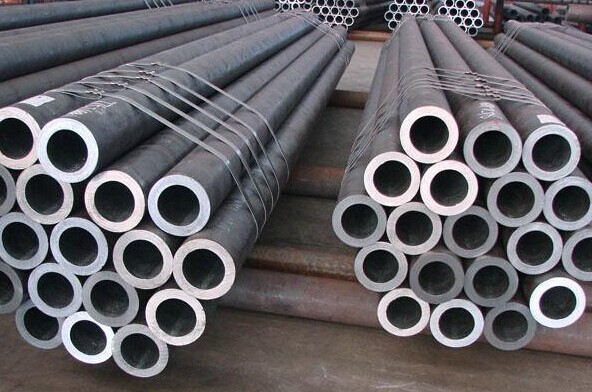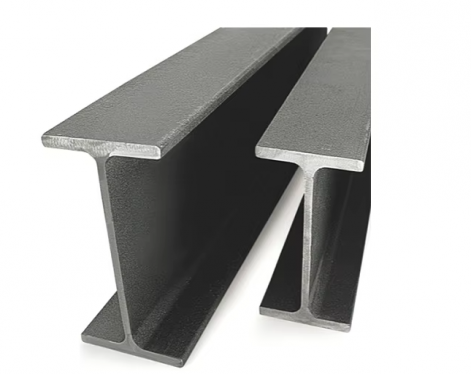Normalizing of cs seamless pipes is to heat the workpiece to Ac3 (Ac refers to the final temperature at which all free ferrite is transformed into austenite during heating.Generally from 727℃ to 912℃) or Acm (Acm is the critical temperature line for complete austenitization of hypereutectoid steel in actual heating) 30~50℃.After holding for a period of time, the metal heat treatment process cooled in air or by water, spray or blowing is removed from the furnace.
The purpose is to refine the grains and to homogenize the carbide distribution. The difference between normalizing and annealing is that the cooling rate of normalizing is slightly faster than that of annealing, so the normalizing structure is finer than the annealing structure, and its mechanical properties are also improved.
In addition, the external cooling of the normalizing furnace does not occupy equipment, and the productivity is high. Therefore, normalizing is used as much as possible to replace annealing in production. For important forgings with complex shapes, high temperature tempering (550-650°C) is required after normalizing to eliminate the stress generated during normalizing cooling and improve toughness and plasticity.

① For hypoeutectoid steel, normalizing is used to eliminate overheated coarse-grained structure and Widmanners structure of cast, forged and welded parts, and banded structure in rolled material; to refine grains; it can also be used as a pre-heat treatment before quenching.
② For hypereutectoid steel, normalizing can eliminate the reticulated secondary cementite and refine the pearlite, which not only improves the mechanical properties, but also facilitates the subsequent spheroidizing annealing.
③ For low-carbon deep-drawing thin steel sheets, normalizing can eliminate free cementite at grain boundaries to improve its deep-drawing properties.
④ For low-carbon steel and low-carbon low-alloy steel, normalizing can be used to obtain more fine flake pearlite structure, increase the hardness to HB140-190, avoid the phenomenon of "sticking to the knife" during cutting, and improve machinability . For medium carbon steel, normalizing is more economical and convenient when both normalizing and annealing are available.
⑤ For ordinary medium carbon structural steel, when the mechanical properties are not high, normalizing can be used instead of quenching and high temperature tempering, which is not only easy to operate, but also makes the structure and size of the steel stable.
⑥ High temperature normalizing (150~200℃ above Ac3) can reduce the composition segregation of castings and forgings due to the high diffusion rate at high temperature. The coarse grains after high temperature normalizing can be refined by the second normalizing at lower temperature.
⑦ For some low and medium carbon alloy steels used in steam turbines and boilers, normalizing is often used to obtain bainite structure, and then tempered at high temperature, it has good creep resistance when used at 400-550 °C.
⑧ In addition to steel and steel, normalizing is also widely used in heat treatment of ductile iron to obtain pearlite matrix and improve the strength of ductile iron.
Since normalizing is characterized by air cooling, ambient temperature, stacking method, airflow and workpiece size all affect the organization and performance after normalizing. The normalized structure can also be used as a classification method for alloy steel. Generally, alloy steels are divided into pearlitic steel, bainitic steel, martensitic steel and austenitic steel according to the microstructure obtained by air cooling after heating a sample with a diameter of 25 mm to 900 °C.
The difference between normalizing and annealing
(1) The normalizing temperature is higher, and the annealing temperature is lower.
(2) The cooling rate of normalizing is faster than that of annealing.
(3) The effect of use is different. After carburizing treatment, normalizing can eliminate reticulated cementite, but annealing cannot. For carbon content below 0.25X, normalizing can increase hardness and improve machinability, but annealing cannot.
(4) The normalizing cycle is short and the operation is convenient; the annealing cycle is long and the operation is more troublesome (referring to the need to control a certain cooling rate).
The purpose is to refine the grains and to homogenize the carbide distribution. The difference between normalizing and annealing is that the cooling rate of normalizing is slightly faster than that of annealing, so the normalizing structure is finer than the annealing structure, and its mechanical properties are also improved.
In addition, the external cooling of the normalizing furnace does not occupy equipment, and the productivity is high. Therefore, normalizing is used as much as possible to replace annealing in production. For important forgings with complex shapes, high temperature tempering (550-650°C) is required after normalizing to eliminate the stress generated during normalizing cooling and improve toughness and plasticity.

① For hypoeutectoid steel, normalizing is used to eliminate overheated coarse-grained structure and Widmanners structure of cast, forged and welded parts, and banded structure in rolled material; to refine grains; it can also be used as a pre-heat treatment before quenching.
② For hypereutectoid steel, normalizing can eliminate the reticulated secondary cementite and refine the pearlite, which not only improves the mechanical properties, but also facilitates the subsequent spheroidizing annealing.
③ For low-carbon deep-drawing thin steel sheets, normalizing can eliminate free cementite at grain boundaries to improve its deep-drawing properties.
④ For low-carbon steel and low-carbon low-alloy steel, normalizing can be used to obtain more fine flake pearlite structure, increase the hardness to HB140-190, avoid the phenomenon of "sticking to the knife" during cutting, and improve machinability . For medium carbon steel, normalizing is more economical and convenient when both normalizing and annealing are available.
⑤ For ordinary medium carbon structural steel, when the mechanical properties are not high, normalizing can be used instead of quenching and high temperature tempering, which is not only easy to operate, but also makes the structure and size of the steel stable.
⑥ High temperature normalizing (150~200℃ above Ac3) can reduce the composition segregation of castings and forgings due to the high diffusion rate at high temperature. The coarse grains after high temperature normalizing can be refined by the second normalizing at lower temperature.
⑦ For some low and medium carbon alloy steels used in steam turbines and boilers, normalizing is often used to obtain bainite structure, and then tempered at high temperature, it has good creep resistance when used at 400-550 °C.
⑧ In addition to steel and steel, normalizing is also widely used in heat treatment of ductile iron to obtain pearlite matrix and improve the strength of ductile iron.
Since normalizing is characterized by air cooling, ambient temperature, stacking method, airflow and workpiece size all affect the organization and performance after normalizing. The normalized structure can also be used as a classification method for alloy steel. Generally, alloy steels are divided into pearlitic steel, bainitic steel, martensitic steel and austenitic steel according to the microstructure obtained by air cooling after heating a sample with a diameter of 25 mm to 900 °C.
The difference between normalizing and annealing
(1) The normalizing temperature is higher, and the annealing temperature is lower.
(2) The cooling rate of normalizing is faster than that of annealing.
(3) The effect of use is different. After carburizing treatment, normalizing can eliminate reticulated cementite, but annealing cannot. For carbon content below 0.25X, normalizing can increase hardness and improve machinability, but annealing cannot.
(4) The normalizing cycle is short and the operation is convenient; the annealing cycle is long and the operation is more troublesome (referring to the need to control a certain cooling rate).









